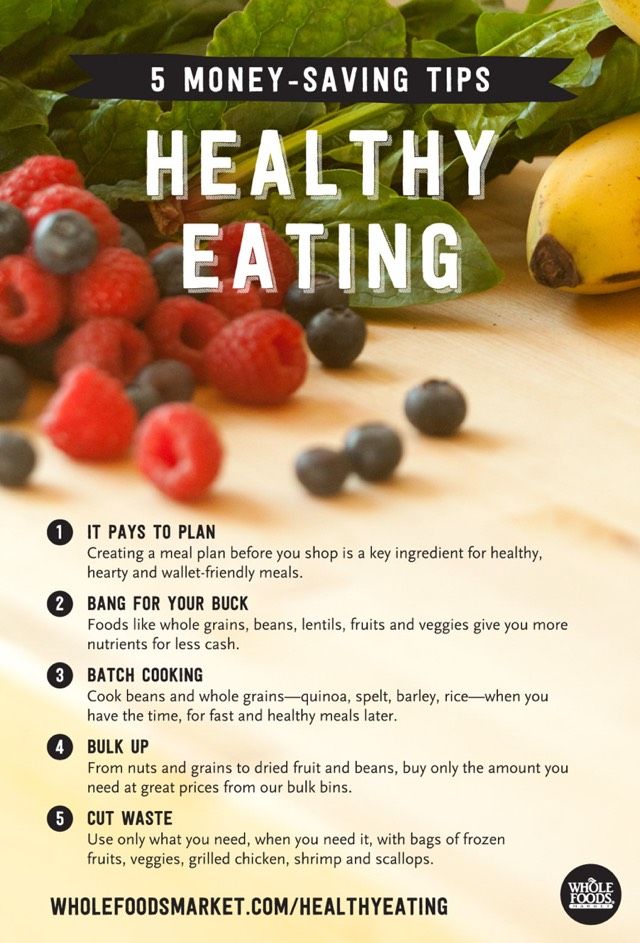
We're all taught to eat a healthy lifestyle. But what do food labels actually mean? They are basically a guideline that tells us how much food is rich in certain nutrients and whether it's balanced. These guidelines will help us ensure that we are getting the right amount of nutrients. Here are six essential facts on food labels. These facts are not only important for your health but also for your wallet. Know what they mean and keep them handy when shopping.
Let's begin by discussing what food labels are. Food labels usually list ingredients in ascending order of weight. The ingredients listed should contain all the essential nutrients. They also list any artificial ingredients. If a food contains no sugar, it means that the manufacturer added artificial sweeteners to it. However, it does not mean that the food doesn't contain natural sweeteners. This also means the food is free from preservatives or other additives.
Good health is dependent on food labels. You can easily find out what's on the food you're buying. You will find all the nutrition information you need by looking at food labels. It is possible to see whether a product contains vitamin A, vitamin C, iron, or calcium. Knowing what is in a food can help you make informed decisions about your health.
These are just a handful of examples, but they are important for your well-being. Every product must contain a description of the ingredients. Labels must include nutrition information. It is important to understand these labels so that you can ensure the information is correct and not misleading. You'll be better informed about your choices when you're savvy about these details. So, don't be afraid to ask yourself questions about the nutritional content and other information on food labels.
Your health is dependent on the food label. It will help you to select the best food for you and your goals. You can avoid eating unnecessary calories or other unhealthy foods by reading the label. It can also help to maintain a healthy diet. It's crucial that you carefully read labels in order to know what is in each food. The information on the labels can help you make healthy choices. It is crucial that you understand what the labels say about the foods you buy.

It is important to read the food label in order to be healthy. You should read labels to find out what foods you can eat. It is important that you know the exact serving size of any food. It's important to keep in mind that nutrition labels have been updated to emphasize the items that are most significant to your health. They're meant to be a helpful tool for your health. It is important to read labels carefully if you are unsure of what is in a particular food.
It can help you make informed purchasing decisions by providing information on food labels. Depending on the food item you are buying, the label can help you compare the nutritional content of the foods. It is important to consider the size of your servings as it can affect how much you eat. Checking the labels on a variety foods can help you determine the exact serving size. Use the right number and type of measuring spoons or cups to find the perfect size.
A food label will indicate how many servings a particular food has. The serving size refers to how many calories are contained in a single portion. The calories in a single serving can be made up of fat, carbohydrates, and protein. It's important to read the nutritional content of any food. You can make informed decisions about how many calories you should consume by reading the label. But, before you eat a food, make sure to read the serving size.

There are many things to consider when selecting a meal. First, it is important to know how many people are eating. It is important to eat a portion of food that does not contain more then four grams of saturated fat. Reduced calories are a good idea. You should also consider the amount of meat that is listed on the label. You should also check the size of any dairy products. You should see the label to find out how much fat is contained in each product.
FAQ
Can I learn to cook alongside my kids?
Yes! Yes, kids love to help in kitchen. It's a fun activity that teaches them responsibility and teamwork. Children can help in everything, from washing vegetables and cutting onions. They will enjoy helping you to cook if your children are safe with knives.
Are you able to cook by yourself?
Yes, you can be a self-taught cook! Cooking is one of those things that everyone loves doing, whether they know how to do it or not. You can learn to cook by starting at home. Start small with things like making pancakes or spaghetti sauce for your dinner. The best way to learn how to cook is to try new recipes and experiment. You may even want to make a few mistakes along the way.
You can learn to cook in a matter of hours or weeks depending on your level of cooking ability. It is important to remember that cooking doesn't have to be about following recipes. There are many different ways to prepare food, so if you have an idea in mind, go with it.
What is the difference between a chef & a cook?
A chef is someone who prepares food for others. A cook prepares the food for oneself. While both jobs involve the preparation of food, a chef interacts directly with his customers. They may need to make decisions about what they will serve to their guests based upon their preferences. Cooks don't interact with customers. Instead, they ensure that the food tastes delicious before they serve it to others.
How can I learn to cook like the pros?
Cooking is one of the best ways to become a better person. You can increase your self-confidence by learning how to cook healthy foods for yourself and others. You can learn to cook at home if your goal is to become a good cook. Finding out your favorite recipes is the first step. Then, read books about different foods, such as Italian, Mexican, Chinese, etc. Finally, make sure you practice different recipes until you feel confident.
How long does it take to learn to cook? What time do you need to learn how to cook?
It depends on what kind of skill level you are trying to achieve. Some people are able to learn basic cooking skills in a matter of days. Some people take months to learn how to cook. Others may need to wait for years.
The time it takes to learn how to cook will vary depending on who you are. An example: Someone who has never cooked before may need more time than someone who makes regular meals. Some types of cooking are more difficult than others. For instance, baking requires more knowledge than frying.
Focusing on a particular technique is the best way to speed up your cooking skills. Once you have perfected that technique, you can move on. You don't need to worry about how many days or weeks it took to learn how to cook. Keep practicing and enjoying the process.
What skills is required to attend culinary school
To become a chef, you must be able to cook well, work under pressure, and understand food safety regulations. To learn how to cook, you should take cooking classes at your local high school or community college. Once you have mastered the basics of cooking, you will need to find work in a restaurant and catering company.
Do I have to buy ingredients in order to cook?
There is no need to purchase all the ingredients. Premade sauces can be found in most grocery stores. However, you can save money by buying pre-made meals.
Statistics
- You'll be amazed that over 90% of CIA students receive scholarships and grants to finish their culinary studies. (ischoolconnect.com)
- In the United States, the category is estimated at $23.2 billion annually and is growing faster than the market. (washingtonpost.com)
- On average, chefs earn $58,740 a year, according to the BLS. - learnhowtobecome.org
External Links
How To
How to make a perfect omelet
Omelets have always been a favourite food to eat for breakfast. But how do you create them perfectly? I've tried many different methods and recipes, but none of them seem to work! Today, I'd like to share some tips with you in order to make delicious and fluffy omelets every day.
First, eggs can be very temperamental ingredients for making omelets. They must be fresh, preferably from the organic market, and be kept cold until cooking. If you don't keep them cold enough, the whites won't form properly, and the yolks will break down too much and become runny. This can make your omelets look bizarrely colored. If you're going to cook them immediately, it is best if the eggs are still warm.
Another tip is to separate the egg before adding it to the pan. You don't want the white to get mixed with the yolk, as this could cause the egg to curdle.
The bottom part of an egg that is added directly to the stovetop might be burned, which could cause a ruined texture in your omelet. Instead, microwave the egg for 10 seconds before adding it to the pan. The microwave heat cooks the eggs just right without overcooking them.
Next, let’s talk about mixing the egg. Mix eggs well together. Turn the bowl upside down and grab the whisk to do this. Then, vigorously shake the bowl. This will whip the air around the bowl and mix the egg well.
The fun part begins - you need to pour the milk into your mixture. Fold the eggs in the milk mixture by first pouring half of it into the egg whites. You don't need to worry if streaks remain. They will disappear once you flip your omelet.
After folding the eggs fold the pan onto medium heat. When the oil starts to hot, wait for the pan to cook. When the oil is hot enough, add 1/4 cup butter to the pan. Stir it around until the butter covers the entire pan. Next, carefully open the lid and sprinkle salt into your pan. The salt will help to prevent the omelet's sticking to the pan.
Cover the pan once you have formed the omelet. Wait for the top to set. Use a spatula to flip the omelet or turn the pan upside-down. Cook the other half for another minute. Serve immediately after removing the omelet from its pan.
This recipe works best using whole milk. Skimmed milk is also possible.